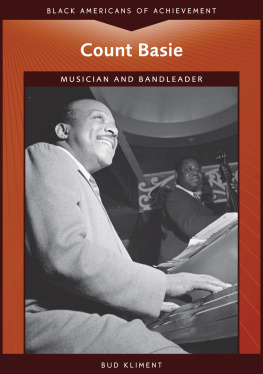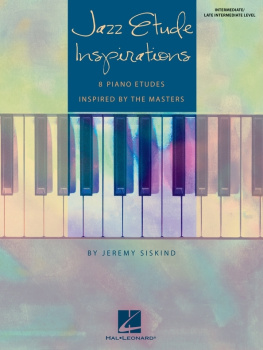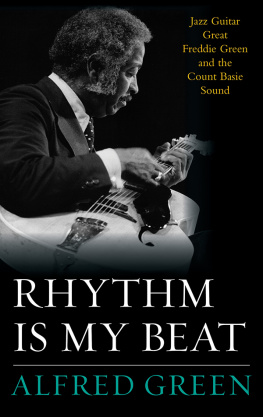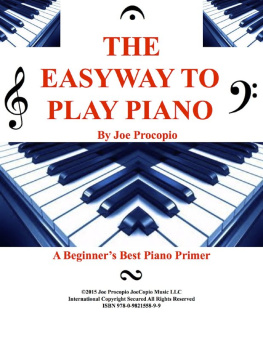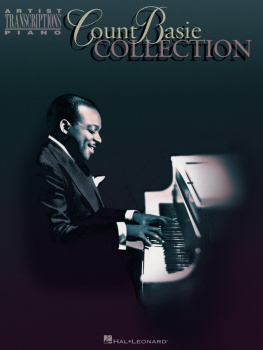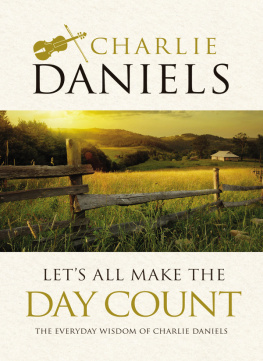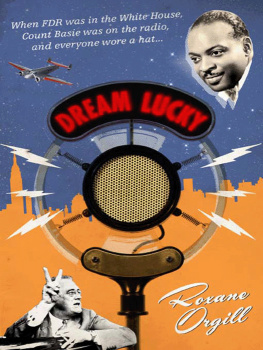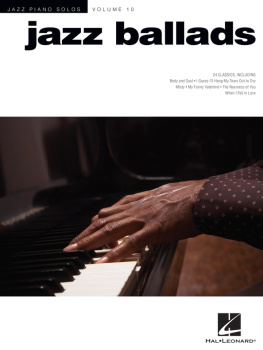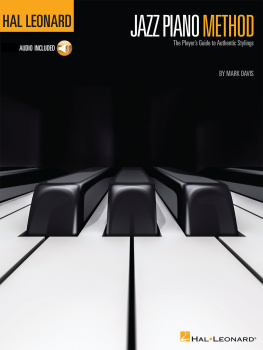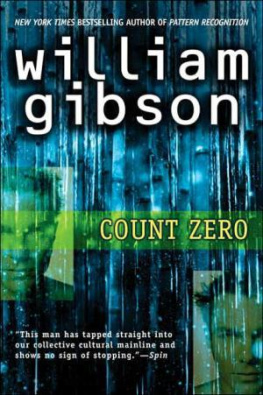Bud Kliment - Count Basie: Musician and Bandleader
Here you can read online Bud Kliment - Count Basie: Musician and Bandleader full text of the book (entire story) in english for free. Download pdf and epub, get meaning, cover and reviews about this ebook. year: 2014, publisher: Infobase Publishing, genre: Non-fiction. Description of the work, (preface) as well as reviews are available. Best literature library LitArk.com created for fans of good reading and offers a wide selection of genres:
Romance novel
Science fiction
Adventure
Detective
Science
History
Home and family
Prose
Art
Politics
Computer
Non-fiction
Religion
Business
Children
Humor
Choose a favorite category and find really read worthwhile books. Enjoy immersion in the world of imagination, feel the emotions of the characters or learn something new for yourself, make an fascinating discovery.
- Book:Count Basie: Musician and Bandleader
- Author:
- Publisher:Infobase Publishing
- Genre:
- Year:2014
- Rating:3 / 5
- Favourites:Add to favourites
- Your mark:
- 60
- 1
- 2
- 3
- 4
- 5
Count Basie: Musician and Bandleader: summary, description and annotation
We offer to read an annotation, description, summary or preface (depends on what the author of the book "Count Basie: Musician and Bandleader" wrote himself). If you haven't found the necessary information about the book — write in the comments, we will try to find it.
A masterful bandleader, William Basieknown as Count Basieassembled many of Americas top musicians into an orchestra that popularized jazz for nearly half a century. He had an extraordinary talent for playing the piano in a stripped down
Count Basie: Musician and Bandleader — read online for free the complete book (whole text) full work
Below is the text of the book, divided by pages. System saving the place of the last page read, allows you to conveniently read the book "Count Basie: Musician and Bandleader" online for free, without having to search again every time where you left off. Put a bookmark, and you can go to the page where you finished reading at any time.
Font size:
Interval:
Bookmark:
Copyright 2014 by Infobase Learning
All rights reserved. No part of this publication may be reproduced or utilized in any form or by any means, electronic or mechanical, including photocopying, recording, or by any information storage or retrieval systems, without permission in writing from the publisher. For more information, contact:
Chelsea House
An imprint of Infobase Learning
132 West 31st Street
New York NY 10001
ISBN 978-1-4381-4525-9
You can find Chelsea House on the World Wide Web
at http://www.infobaselearning.com
John Hammond braced himself against the cold as he stood in the doorway of Chicago's Congress Hotel on a November night in 1935. The 25-year-old music impresario had come from the hotel's ballroom, where he had been listening to clarinetist Benny Goodman's big jazz band. The son of a wealthy New York family, Hammond was extremely knowledgeable and enthusiastic about music and at his young age had already established himself as a critic and producer. He had also befriended many jazz musicians and frequently gave them advice and support. He had traveled to Chicago, in fact, to visit his friend Goodman as the bandleader began an important engagement at the Congress, one of the city's most prestigious night spots.
The band had played so well that during intermission Hammond had gone up to the bandleader to offer his congratulations. It had grown late in the evening, however. Hammond was ready to leave the hotel and get some sleep.
As he stepped onto the sidewalk and the lively sounds of jazz faded behind him, Hammond's thoughts turned immediately to the blustery cold. No wonder Chicago was called the Windy City, he said to himself as he dug his chin into the top of his coat and pulled his arms close to his body. Fortunately, he had parked his Hudson automobile just across the street from the hotel and was able to get into it quickly.
Rubbing his hands and blowing on them, Hammond slid hastily across the front seat, where a bulky radio took up much of the space. Affectionately nicknamed the Golden Throat, it was an oversized shortwave receiver equipped with 12 tubes and a large speaker and was unlike any other car radio of that era. "I spent so much time on the road," Hammond said later, "that I wanted a superior instrument to keep me in touch with music around the country." Instinctively, even before he had settled in his seat, he switched it on.
Because of the late hour, few programs were being broadcast. Hammond spun the radio's dial in earnest, searching for some kind of music. Suddenly, near the high end of the dial, at 1550 kilocycles, the sound of a jazz band broke through the static. As Hammond tuned in the station more clearly, the music seized his attention. What was this? he thought, sitting up straight in his seat and leaning closer to the speaker. He continued to listen, and as he did his heart raced a little and a smile crossed his face.
What he heard was not a large band-eight or nine instruments at most, although the way they played together was remarkable. Different players came forward with impeccable timing, taking solos that sparkled but never overtook the group or slowed it down. An experienced listener with an exceptional ear, Hammond had never heard such a rhythm section before. The band's bass, drums, and piano generated a seamless beat, subtle and relaxed but also unfailingly versatile.
After listening for several minutes, Hammond felt wide awake, revived by the band's lively sound. He also stopped thinking about the cold. The air around him may have been freezing, but the music on his radio was most definitely hot.
When the song ended, an announcer said, "That was Count Basie and His Barons of Rhythm live from the Reno Club here in Kansas City. We'll be back in a few minutes." Hammond fell back in his seat and recalled the time he had heard Count Basie play piano a few years earlier in New York. He had no idea that Basie was now leading a band of his own. Then Hammond realized: If he had not heard of Basie's new group, chances were that not many other people in the music business knew about it, either.
Stunned but excited, Hammond began to think anxiously about the future. If there was one thing he liked more than discovering new music, it was telling everyone about it. As he switched on the car's ignition and pulled away from the curb into the dark Chicago night, he began to formulate a plan that would enable all of America to enjoy the Count Basie band.

Count Basie sits at the piano as record producer John H. Hammond (left) and an unidentified man join him for a photo in 1946. As a talent scout, Hammond helped launch many careers, including that of Count Basie, Bob Dylan, Billie Holiday, Aretha Franklin, and Bruce Springsteen.
Source: Getty Images: Michael Ochs Archives.
Between sets at Kansas City's Reno Club, William Basie and his musicians were enjoying a break. As the bandleader, who had given himself the nickname Count, left his seat at the piano to make his way through the crowd, he considered the festive atmosphere his band's music had helped create. Full of smiles and laughter, everyone in the club seemed to be having a good time: another happy night at the Reno. For him and his band, Basie thought, the club was a good home.
Kansas City during the 1930s was crowded with places where people gathered to hear live music, and many believed that the Reno Club, a long, narrow brick building on Twelfth Street between Cherry and Locust streets, was among the city's liveliest and most entertaining night spots. Hour-long stage shows featuring local performers were held there four times a night, every night. Between shows the house band played music for the customers to dance to, and inexpensive food and alcohol were served.
Like many of the other Kansas City nightclubs, the Reno was patronized by blacks and whites but was not integrated. Each race had its own dance floor, bar, and tables. Despite the segregated facilities, the atmosphere in the club was relaxed and lively, and there was usually a friendly rapport between the performers and the customers.
Clubs such as the Reno provided terrific opportunities for musicians to earn money while having fun. Basie's band, for instance, appeared in two different shows: a stage performance and a set for the dancers. The group played continuously every night from about 9:00 P.M. until 5:00 A.M., taking a 10-minute break every hour. On the average, each band member earned about $18 a week plus tips; Basie, as the group's leader, took home about $21. It seemed, however, that they cared as much about making music as they did about making money.
Like most of the hundreds of musicians who lived and worked in Kansas City, Basie and his musicians loved to play. Often at the Reno-and at many of the other local nightclubs-the band members kept on playing hours after the customers had gone home. Musicians from other bands would drop by to participate in the freely improvised performances known as jam sessions or in cutting contests, extended jam sessions in which individual musicians tried to outplay one another by trading songs and solos, sometimes for hours. Everyone enjoyed the constant practice and competition, for they knew it made them superior musicians.
In addition to being a place where they could play regularly, the Reno Club offered Basie and his musicians the advantage of a long-distance radio hookup. Once a week, usually on Sundays, a microphone and transmitter were brought into the club to broadcast the band's performance to neighboring parts of the country. Basie and the other musicians did not pay much attention to the transmitter, but they knew it was a way of spreading their reputation and letting others hear how they sounded. Most likely, they figured, the radio hookup helped advertise the Reno and bring in more customers.
Font size:
Interval:
Bookmark:
Similar books «Count Basie: Musician and Bandleader»
Look at similar books to Count Basie: Musician and Bandleader. We have selected literature similar in name and meaning in the hope of providing readers with more options to find new, interesting, not yet read works.
Discussion, reviews of the book Count Basie: Musician and Bandleader and just readers' own opinions. Leave your comments, write what you think about the work, its meaning or the main characters. Specify what exactly you liked and what you didn't like, and why you think so.

